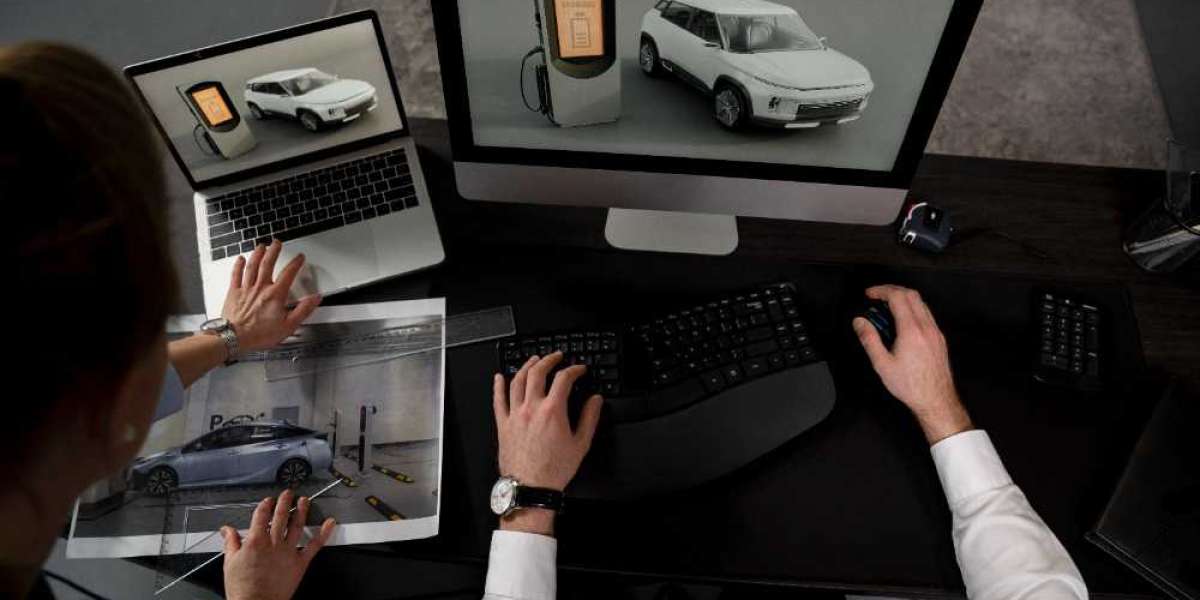The automotive industry is undergoing a radical transformation, and software is at the heart of it. As we approach 2025, the evolution of automotive software development is shaping the future of driving experiences, vehicle safety, and transportation solutions. With advancements in AI, IoT, machine learning, and autonomous technologies, the demand for cutting-edge automotive software design solutions has never been higher. Car manufacturers, OEMs, and suppliers are now focusing on integrating sophisticated software systems that power everything from vehicle infotainment systems to advanced driver assistance systems (ADAS), and even fully autonomous driving technologies.
These innovations are not only changing how vehicles are built but also how they are operated, maintained, and experienced by consumers. Automotive software development has become a critical part of automotive engineering, influencing everything from performance optimization to customer satisfaction. With the increasing complexity of vehicle systems, the need for highly skilled professionals and innovative solutions is paramount to stay ahead of the competition.
2025 Automotive Software Development Trends
As we move into 2025, several emerging trends are expected to dominate the automotive software development landscape:
1. Autonomous Vehicles and AI Integration
Autonomous vehicles are no longer just a concept—they are becoming a reality. Self-driving cars powered by AI and machine learning are expected to be mainstream by 2025. The role of automotive software will be crucial in making autonomous driving safer and more reliable. This involves developing advanced algorithms for vehicle perception, decision-making, and path planning.
AI-powered systems will help vehicles understand their surroundings in real-time, including other vehicles, pedestrians, traffic signals, and road conditions. For automotive software developers, this presents both an exciting opportunity and a significant challenge, as they will need to ensure the software is precise, fast, and capable of handling complex, real-world scenarios.
2. Vehicle-to-Everything (V2X) Communication
Vehicle-to-Everything (V2X) communication is set to revolutionize how cars interact with the world around them. Through V2X technology, vehicles can communicate with each other, infrastructure (like traffic lights and road signs), and even pedestrians, providing real-time data that enhances safety and efficiency. In 2025, the integration of V2X communication systems will become more seamless, requiring robust automotive software solutions to ensure fast and secure data exchange.
The software will need to support high levels of connectivity, security, and data processing speed to enable V2X systems to function effectively, which means developers will need to innovate around secure data transmission and low-latency systems.
3. Over-the-Air (OTA) Updates and Software as a Service (SaaS)
Gone are the days when vehicles had to be physically taken to service centers for software updates. Over-the-air (OTA) updates are becoming increasingly common, allowing automakers to deliver software patches and feature upgrades remotely. By 2025, the automotive industry is expected to rely heavily on OTA updates for everything from bug fixes to new functionality.
This trend is aligned with the rise of Software as a Service (SaaS) models, where automakers provide software features to customers on a subscription basis. Whether it's premium navigation services or advanced safety features, automotive manufacturers are exploring new ways to monetize their software offerings. Automotive software developers will need to create flexible, scalable solutions that support OTA updates and subscription-based software models.
4. Cybersecurity Concerns
With the growing complexity of automotive software comes a rise in potential vulnerabilities. As vehicles become more connected and reliant on software, cybersecurity will be a critical issue for automakers. From protecting against hacking attempts to securing sensitive driver data, cybersecurity in the automotive sector is becoming more important than ever.
By 2025, automakers will need to adopt robust encryption methods, secure communication channels, and advanced intrusion detection systems to safeguard their vehicles from cyber threats. Automotive software development will need to incorporate these security features from the ground up, ensuring vehicles remain safe from external threats.
2025 Automotive Software Development Challenges
While the trends mentioned above offer exciting opportunities, they also present significant challenges for the automotive software development industry:
1. Complexity of Vehicle Software Systems
Modern vehicles consist of hundreds of software systems working together. From engine control units (ECUs) to infotainment systems, all of these components need to interact smoothly, often in real-time. As the demand for more advanced technologies increases, the complexity of vehicle software is growing exponentially.
Managing this complexity requires highly skilled engineers who can design, develop, and maintain these systems. The integration of AI, machine learning, and autonomous technologies only adds to the challenge, as developers must create software that is not only functional but also safe, reliable, and scalable.
2. Testing and Validation
Ensuring that automotive software works as expected in every scenario is a daunting task. The safety-critical nature of automotive systems means that thorough testing and validation are essential. For example, autonomous driving software needs to be tested in a variety of conditions, including different weather scenarios, road types, and unexpected obstacles.
Traditional testing methods are often insufficient for the scale and complexity of modern automotive systems. In 2025, developers will need to adopt more advanced testing techniques, such as simulation-based testing and AI-driven testing platforms, to validate software quickly and accurately.
3. Regulatory Compliance and Standards
As automotive software continues to evolve, so too do the regulatory requirements. Safety, data privacy, and environmental regulations will continue to shape the development of automotive software. By 2025, developers will need to stay abreast of global standards, including the ISO 26262 standard for functional safety and the GDPR for data privacy.
Navigating these complex regulations will require careful planning and collaboration between software developers, automotive engineers, and legal teams to ensure compliance without sacrificing innovation.
Calculating the Cost of Automotive Mobile Apps
As the automotive industry embraces mobile technology, automakers are increasingly turning to mobile apps to enhance customer experiences, manage fleet operations, or control vehicle settings remotely. However, developing a mobile app tailored to automotive needs can be a significant investment. If you’re looking to understand the potential costs involved, using a mobile app cost calculator can be a helpful tool. It allows automakers and developers to estimate costs based on factors like app features, design complexity, and platform choice. A mobile app cost calculator helps plan budgets and set realistic expectations for automotive app development projects.
If you're interested in exploring the benefits of Automotive Software Development Services for your business, we encourage you to book an appointment with our team of experts.
Conclusion
The future of automotive software development in 2025 looks incredibly promising, with exciting innovations transforming the industry. However, these trends come with their own set of challenges, from managing complex software systems to ensuring cybersecurity and compliance with regulations. As the automotive industry navigates these shifts, partnering with experienced professionals who offer Automotive Software Development Services will be crucial in achieving success. By staying on top of these trends and overcoming the associated challenges, manufacturers can build smarter, safer, and more efficient vehicles for the next generation of drivers.














